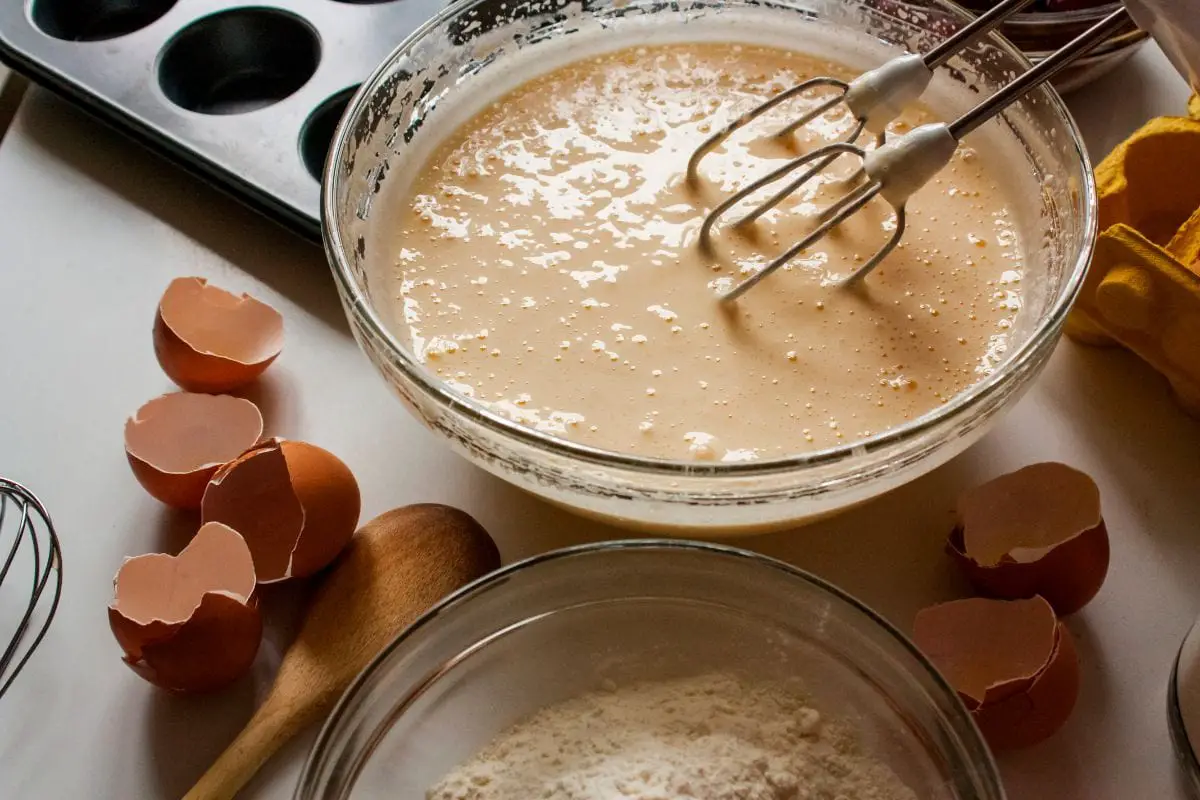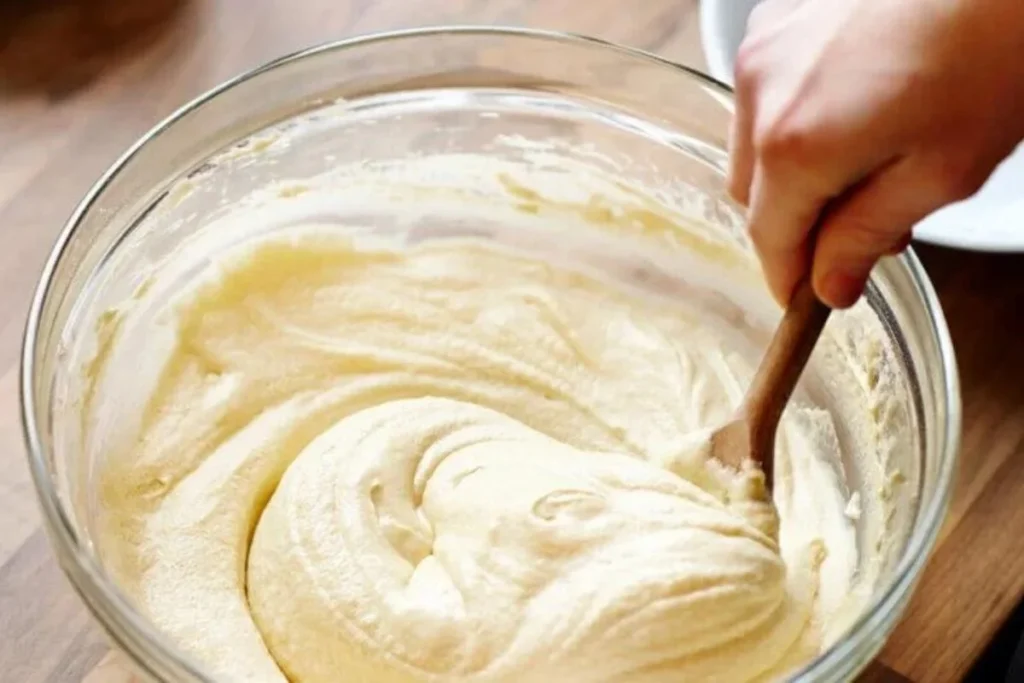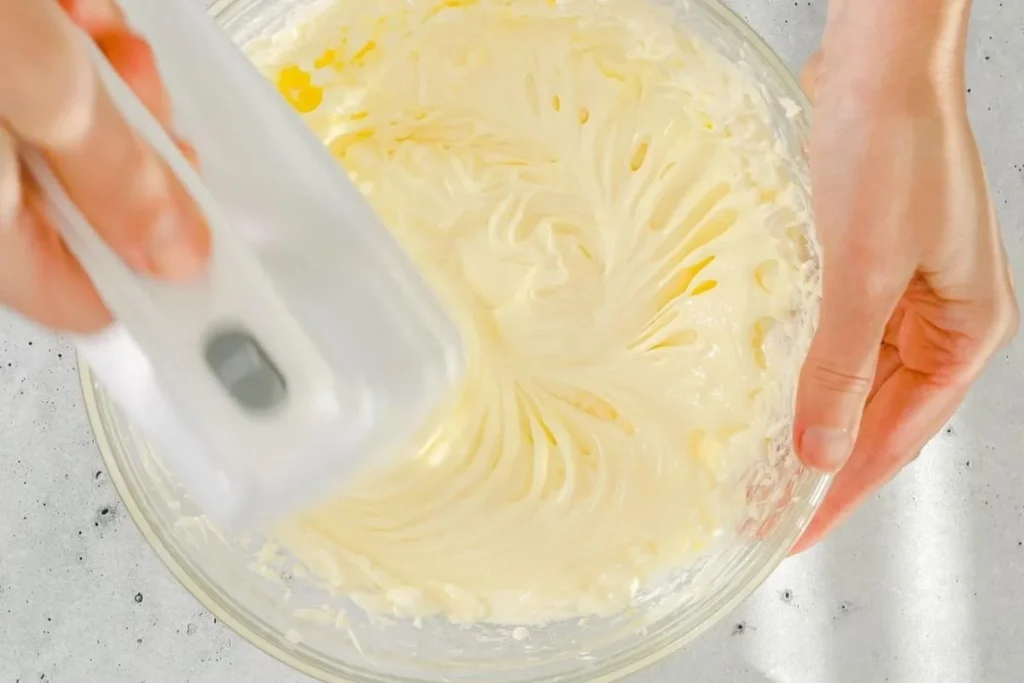
The Truth About Cake Batter: Does it Really Need to be Baked Right Away?
The cake batter is one of the most delicious and versatile ingredients in the world of baking. Whether you’re making a classic vanilla cake, a decadent chocolate cake, or a fruity cake with fresh berries, the batter is the foundation upon which all other elements are built.
But what do you do when you’ve mixed up a batch of cake batter and you’re not quite ready to bake it yet? Do you need to pop it in the oven right away, or can you let it sit for a while before baking? There’s a lot of conflicting information out there on this topic, so it’s time to separate fact from fiction and find out the truth about cake batter.
In this article, we’ll explore the science behind cake batter and discover whether or not it really needs to be baked right away.
Table of Contents
ToggleDoes Cake Batter Need To Be Baked Immediately? Short Answer
Cake batter does not necessarily need to be baked right away. While immediate baking ensures the best results, refrigerating the batter for a short period is generally safe. However, the longer the batter sits, the more it will lose its leavening power, resulting in a denser cake. Additionally, if the batter contains perishable ingredients like eggs, it should not be left at room temperature for too long to prevent foodborne illnesses. Ultimately, it is recommended to bake cake batter as soon as possible for optimal texture and flavor.
What Happens When Cake Batter is Left Out
One of the most common questions asked by bakers is whether or not cake batter can be left out for a period of time before being baked. The answer to this question is not a simple one, as it depends on several factors, such as the ingredients used, the temperature of the environment, and the length of time the batter is left out.
When cake batter is left out, the ingredients begin to interact and undergo chemical reactions, which can affect the overall texture and flavor of the finished product. For example, if the batter contains baking powder or baking soda, the leavening agents can begin to activate, causing the batter to rise prematurely. This can result in a cake with an uneven texture or a dense, heavy crumb.
Additionally, leaving cake batter out for too long can increase the risk of bacterial growth, which can lead to foodborne illness. This is especially true if the batter contains eggs or dairy products, as these ingredients are particularly susceptible to bacterial contamination.
In general, it’s best to avoid leaving cake batter out for extended periods of time. If you’re not ready to bake the cake immediately after mixing the batter, it’s recommended that you store it in the refrigerator or freezer until you’re ready to use it.

Common Misconceptions About Cake Batter
There are several common misconceptions about cake batter that can lead to confusion and misinformation.
One of the most persistent myths is that cake batter must be baked immediately after mixing, or it will not rise properly. While it’s true that leaving cake batter out for too long can cause the leavening agents to activate prematurely, this does not necessarily mean that the cake will not rise properly if the batter is chilled or frozen before baking.
Another misconception is that cake batter should be mixed until it is completely smooth and free of lumps. While it’s important to ensure that all of the ingredients are well-combined, overmixing the batter can actually result in a cake with a tough, rubbery texture. It’s best to mix the batter just until the ingredients are incorporated and no lumps remain.
Finally, some bakers believe that the type of pan used to bake the cake can affect the texture and flavor of the finished product. While it’s true that different types of pans can produce slightly different results, the type of pan used is not the most important factor in determining the quality of the cake. The ingredients and mixing technique are much more significant in determining the final outcome.
The Science Behind Cake Batter
To understand the best way to handle cake batter, it’s important to understand the science behind it. Cake batter is a complex mixture of ingredients, including flour, sugar, eggs, butter or oil, and leavening agents such as baking powder or baking soda. When these ingredients are mixed together, several chemical reactions occur that are essential for creating a light, fluffy cake with a tender crumb.
One of the most important reactions that occurs in cake batter is the interaction between the leavening agents and the acidic ingredients in the batter, such as buttermilk or vinegar. When these ingredients come into contact with the leavening agents, carbon dioxide gas is released, which causes the batter to expand and rise in the oven.
Another important reaction that occurs in cake batter is the formation of gluten. Gluten is a protein that is found in wheat flour and is responsible for giving bread and other baked goods their structure and texture. However, too much gluten can result in a cake that is tough and chewy, so it’s important to avoid overmixing the batter to prevent the formation of excess gluten.
Different Types of Cake Batters
There are several different types of cake batters, each with its own unique characteristics and baking requirements. Some of the most popular types of cake batters include:
- Butter cake batter: This type of batter is made with butter, sugar, flour, eggs, and milk or buttermilk. It has a rich, buttery flavor and a dense, moist texture.
- Sponge cake batter: Sponge cake batter is made with eggs, sugar, and flour, but does not contain any butter or oil. It has a light, fluffy texture and is often used as the base for layered cakes.
- Angel food cake batter: Angel food cake batter is made with egg whites, sugar, and flour, but does not contain any butter or oil. It has a light, airy texture and is often served with fresh fruit or whipped cream.
- Chiffon cake batter: Chiffon cake batter is made with oil, sugar, flour, eggs, and baking powder. It has a light, fluffy texture and is often flavored with citrus or other fruit.
Each type of cake batter requires slightly different mixing and baking techniques, so it’s important to follow the recipe carefully to ensure the best results.

How to Store Cake Batter
If you’re not ready to bake your cake immediately after mixing the batter, there are several ways to store it to ensure that it stays fresh and does not spoil. One of the easiest ways to store cake batter is to refrigerate it in an airtight container. This will help to slow down the chemical reactions that occur in the batter and prevent bacterial growth.
Another option is to freeze the batter for later use. To do this, simply pour the batter into a freezer-safe container and label it with the date and type of batter. When you’re ready to use the batter, simply thaw it in the refrigerator overnight and then bring it to room temperature before baking.
The Effects of Refrigerating or Freezing Cake Batter
Refrigerating or freezing cake batter can have several effects on the finished product, depending on the type of batter and the length of time it is stored. In general, refrigerating or freezing cake batter can help to preserve its freshness and extend its shelf life.
However, it’s important to note that refrigerating or freezing cake batter can also affect its texture and flavor. For example, refrigerated or frozen butter cake batter may become denser and less moist, while refrigerated or frozen sponge cake batter may lose some of its light, airy texture.
To minimize these effects, it’s recommended that you only store cake batter for a short period of time, such as a day or two in the refrigerator or a few weeks in the freezer. Additionally, it’s important to bring the batter to room temperature before baking to ensure that it bakes evenly and produces the best texture and flavor.
Tips for Baking with Leftover Cake Batter
If you have leftover cake batter that you want to use up, there are several ways to incorporate it into other recipes. One easy option is to make cupcakes or muffins using the leftover batter. Simply pour the batter into a greased muffin tin and bake until the tops are golden brown and a toothpick inserted into the center comes out clean.
Another option is to use the leftover batter to make a small cake or a batch of cake pops. To do this, simply pour the batter into a small cake pan or form it into small balls, insert a lollipop stick, and dip in melted chocolate or frosting.
Recipes that Use Leftover Cake Batter
If you’re looking for creative ways to use up leftover cake batter, here are a few recipe ideas to get you started:
Cake Batter Cookies: Mix together leftover cake batter with a few additional ingredients, such as flour, eggs, and baking powder, to create soft, chewy cookies with a cake-like texture.
Cake Batter Ice Cream: Mix leftover cake batter with heavy cream, milk, and sugar to create a rich, creamy ice cream with a cake batter flavor.
Cake Batter Pancakes: Mix leftover cake batter with milk, eggs, and flour to create light, fluffy pancakes with a sweet, cake-like flavor.
Conclusion
Cake batter is a versatile and delicious ingredient that is essential for creating a wide variety of baked goods. While there is some conflicting information about whether or not cake batter needs to be baked right away, the science behind it suggests that it’s best to avoid leaving it out for extended periods of time.
Instead, store it in the refrigerator or freezer until you’re ready to use it to ensure that it stays fresh and does not spoil. With a little creativity and some leftover cake batter, you can create a wide range of delicious treats that are sure to impress your friends and family.
Lindsey Mackenzie
About me
Hi there! I’m Lindsey Mackenzie, the founder of Bake Smartly. Baking has been my passion since childhood, growing up in my father’s bakery. With Bake Smartly, I’m excited to share my love for all things sweet and savory. Join me on this delicious journey as we whip up scrumptious treats and sprinkle joy into every bite!






